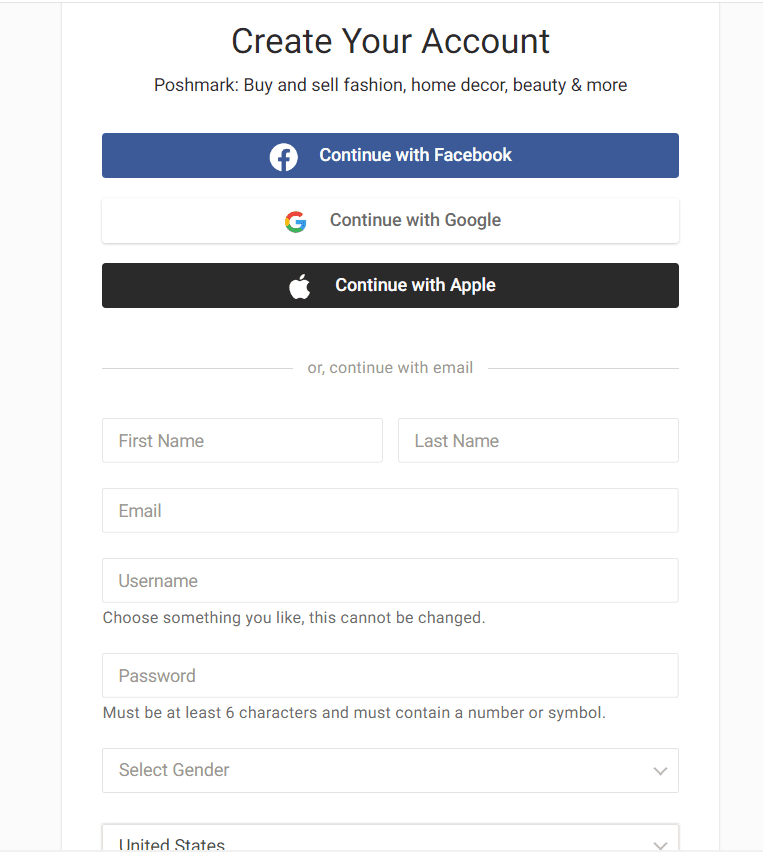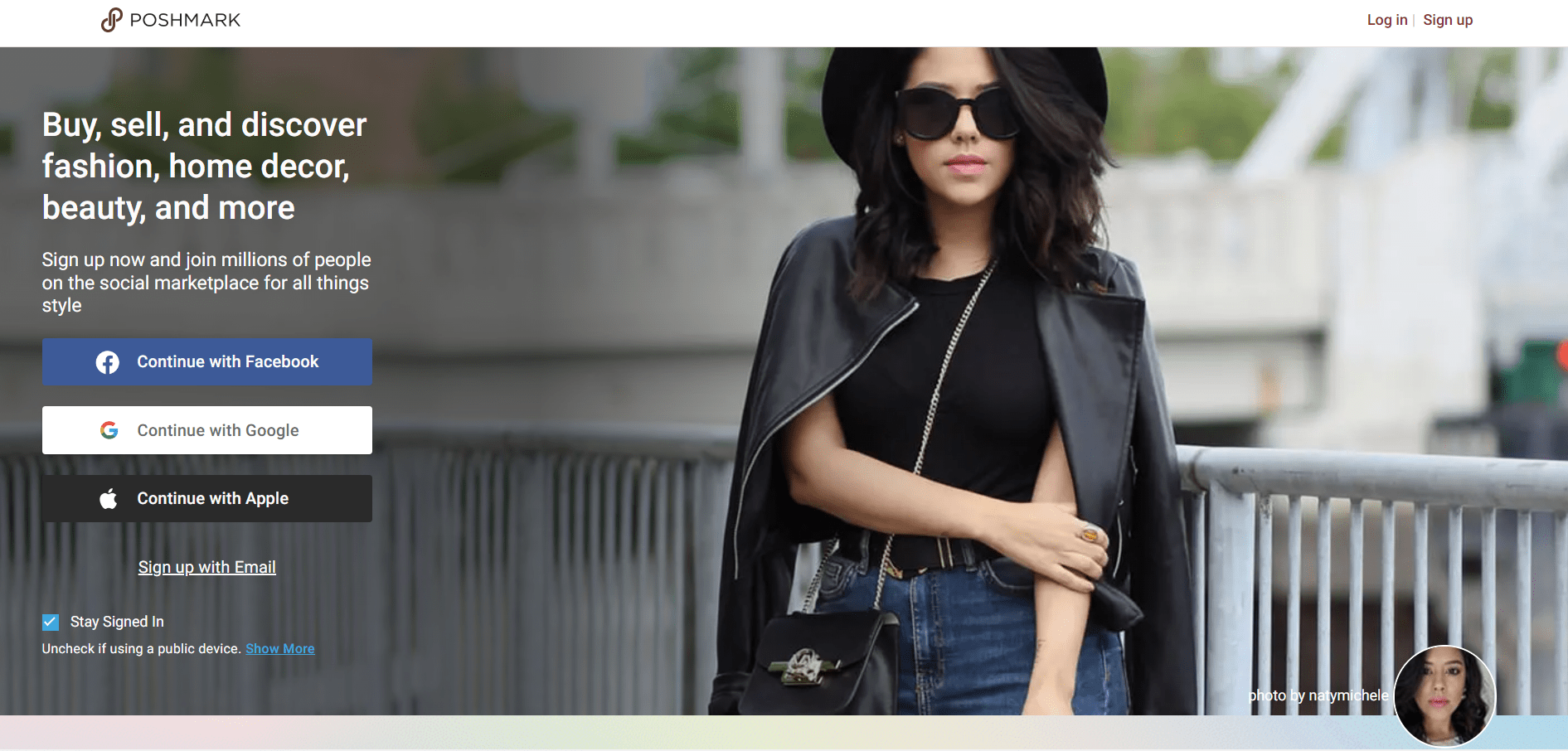How Does Poshmark Work?
To use Poshmark, you’ll need to download the app and create an account so you can start selling.
Poshmark users can look through the resale market to find things to buy, or they can use the app’s search function to look for certain types of clothing and brands.
Customers can send sellers offers on items, negotiate with them, or buy them right away.
All sellers have to do is put the items in a box and ship them using the label that has already been paid for. Both the buyer and the seller can rate each other after the purchase.
Step 1: Sign Up for an Account
The first step is to sign up for an account on Poshmark.

You can do this by downloading the app from the Apple or Google Play Store, or by signing up online at poshmark.com. Once you’ve created your account, you can start listing items for sale.
Step 2: Choose What You Want to Sell
Now that you have an account, it’s time to decide what items you want to sell.
You can sell anything from designer clothing and accessories to vintage pieces and new items with tags still attached.
When choosing what items to list on Poshmark, consider the condition of the item and if there is a market for it.
It also helps to research similar listings so that you can price your item competitively.
Step 3: Set Competitive Prices
When pricing your items, it’s important to do some research first.
Check out similar or identical pieces that have already sold on the app—this will give you an idea of what people are willing to pay.
You also want to keep in mind that people expect discounts when they purchase used items; setting prices too high will likely turn potential buyers away.
Aiming for prices 10-20% lower than the original retail price is usually a safe bet.
Step 4: Take Quality Photos
Photography plays an important role in selling items on Poshmark, so it’s worth investing some time into learning how to take great pictures of your items.
Make sure you have enough light, use a neutral background, and photograph each item from multiple angles so potential customers can get a clear idea of what they’re buying.
Cleanliness is also key — make sure each piece is freshly laundered before photographing it!
Step 5: List Your Items
Once you’ve decided what items you want to list, it’s time to create your listings!
Take clear photos of each item and include detailed descriptions with measurements (if applicable).
Be sure to add hashtags in order to make your listing more visible when people search for certain keywords or phrases related to the item being sold.
If possible, include multiple angles of each product in order for customers to get a better idea of what they are buying before they commit.
Step 6: Promote Your Listings
Poshmark makes it easy to promote your listings with their built-in “share” button; simply click it and select which social media platforms you’d like to share your listing on (Facebook, Twitter, Pinterest).
It’s also worth joining relevant groups on the app where members often post about their listings—this will help increase exposure and hopefully generate more sales as well!
Finally, don’t be afraid to reach out directly via email or DM if someone expresses interest in one of your listings but hasn’t made a purchase yet. A gentle reminder can go a long way!
Step 7: Be Active on Social Media
One of the best ways to increase your visibility on Poshmark is by utilizing social media platforms such as Instagram and Twitter.
Take advantage of hashtags to make sure that potential buyers can find your listings easily, and share content regularly so that people know what you have available.
You should also interact with other sellers; comment on their posts, like their listings, etc. Doing this will help build relationships with other sellers and expand your audience.
Step 8: Stay Consistent
Consistency is key when it comes to making money on Poshmark.
List new items regularly so that buyers always have something fresh to browse through; this will not only keep them coming back but also give them the incentive to purchase.
You should also respond quickly when customers reach out via direct message or comments—this shows that you are reliable and trustworthy, which is essential for building customer loyalty!


